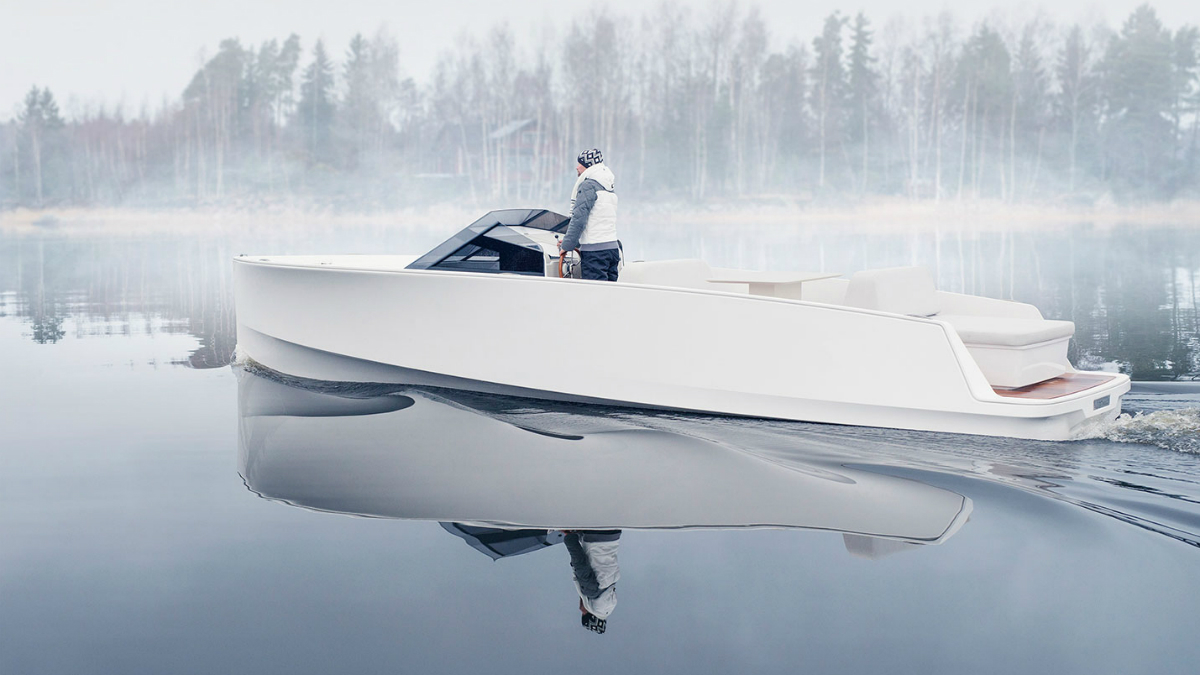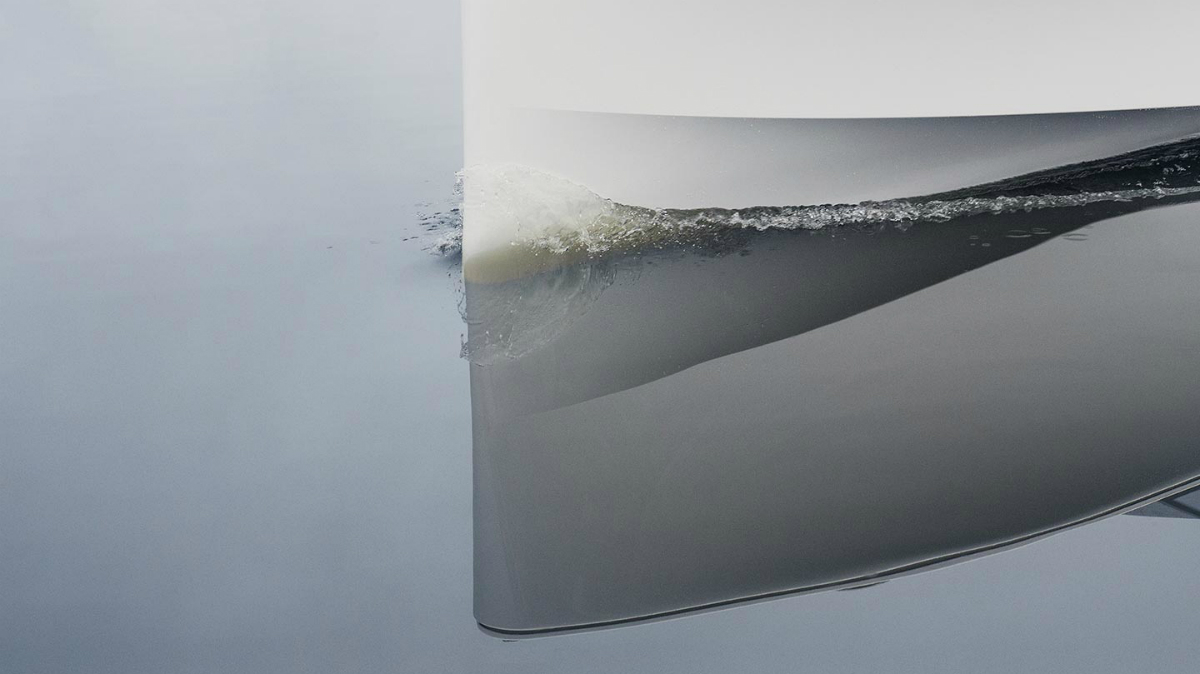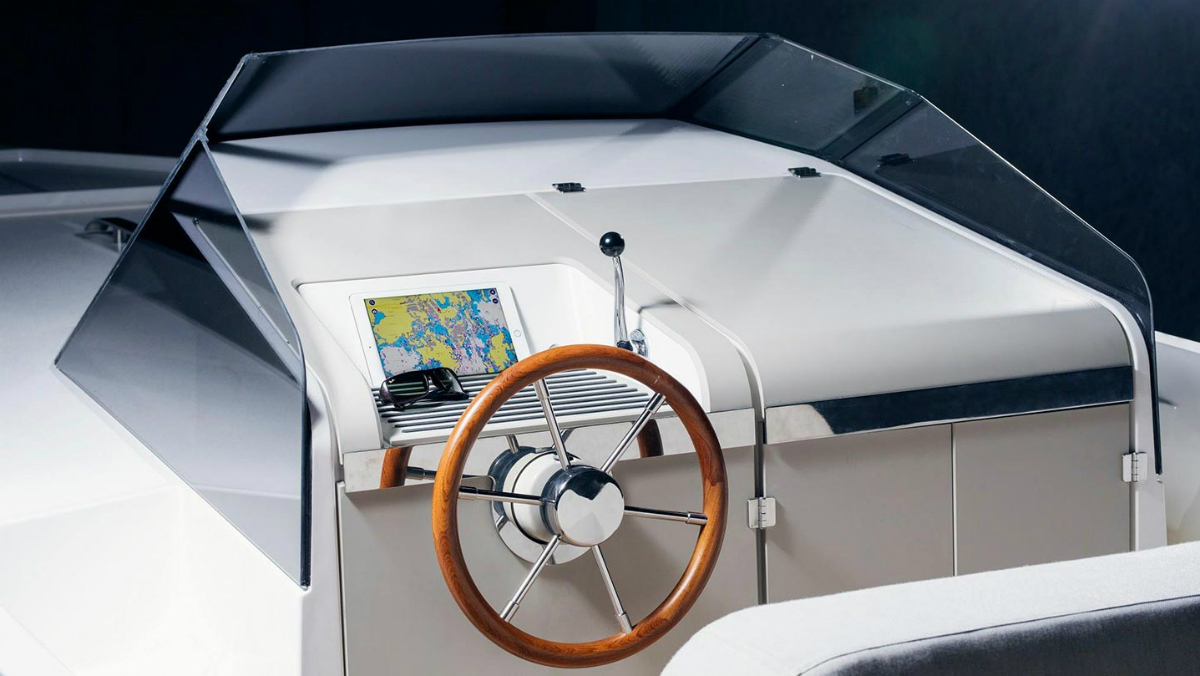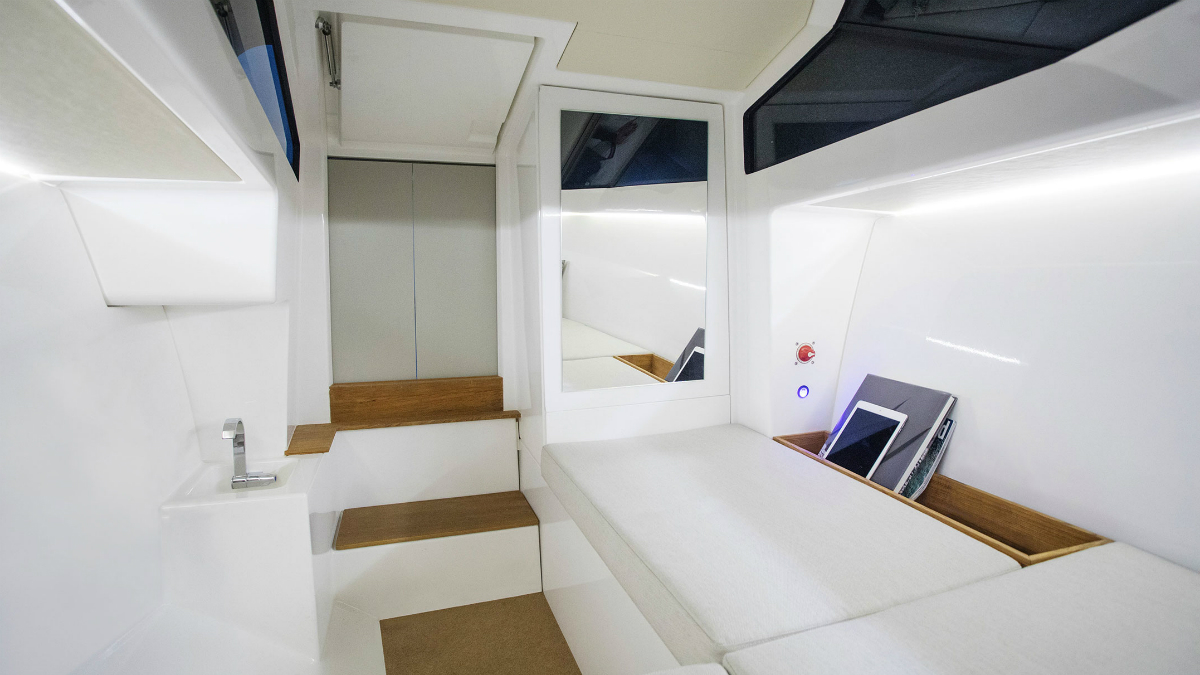The days of fossil fuel-powered craft are numbered. Cars are going all-electric. Flying cars — if, nay, when they happen — are likely to be all-electric. Even electric planes are on the horizon. Now, one forward-thinking Finnish boat-maker is taking to the water with a stunning new all-electric boat.
The Q30 Yacht is a study in stark, minimalist design that’s thoroughly Scandinavian. The smooth, bone-white hull cuts a sharp line through the water like an icy shard pushed by an unseen current. Even much of the deck is laminated with a glistening white gel coat. Save for the wooden decking ’round back, it’s hardly recognizable as a boat from the air.
As a day boat, the Q30 Yacht offers enough room for eight, including a four-seat table and a sunbathing platform for two. For overnights, there’s a bright white interior awash in natural light thanks to an overhead skylight. Low-voltage LED lighting illuminates the cabin after dark. Here, guests will find just enough room to bed down, plus other creature comforts like a small sink and a Beoplay A1 wireless Bluetooth speaker system. Topside, the navigation and lighting are all controlled by a single iPad. The entire package weighs over 3,000 pounds, but it’s easily tow-able with even a small crossover or SUV like, say, your all-electric Tesla Model X.
Janne Kjellman, the pioneering owner of Q Yachts, set out more than a decade ago to devise a silent marine propulsion system. After countless prototypes, he arrived at Oceanvolt, a revolutionary all-electric technology. It had already been in use as an alternative power source for sailboats, but Q Yachts adapted the technology for its luxury motor craft. The result is an all-electric boat that’s almost completely silent with zero emissions.
By the numbers, the Q30 is impressive, especially considering the limited range of most electric craft. An AXC20 electric motor propels the “yacht” (the Finnish evidently use that term loosely) to a top speed of 15 knots with a cruising speed of around nine. The optional 60kWh extended battery pack can keep the 30-foot vessel cruising for up to 80 nautical miles. The hull is constructed of lightweight fiberglass with an ultra-hydrodynamic form that minimizes drag. It won’t take you on a trans-Atlantic sailing trip, but it’s got plenty of juice for tooling around the lake near your Arctic Circle fishing cabin.
Pricing for the Q30 is still to be determined. But, frankly, if you have to ask …








